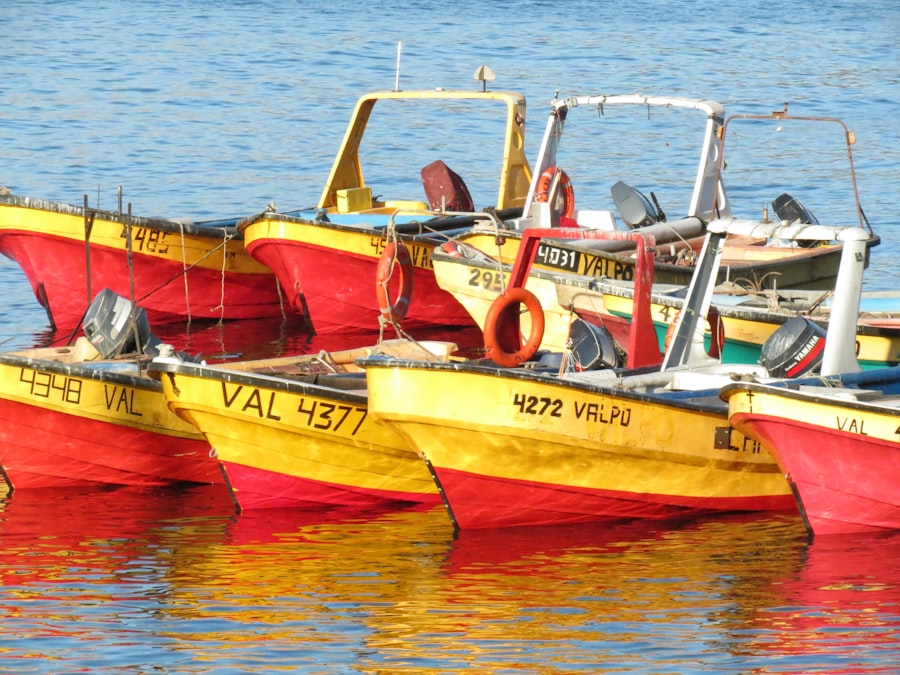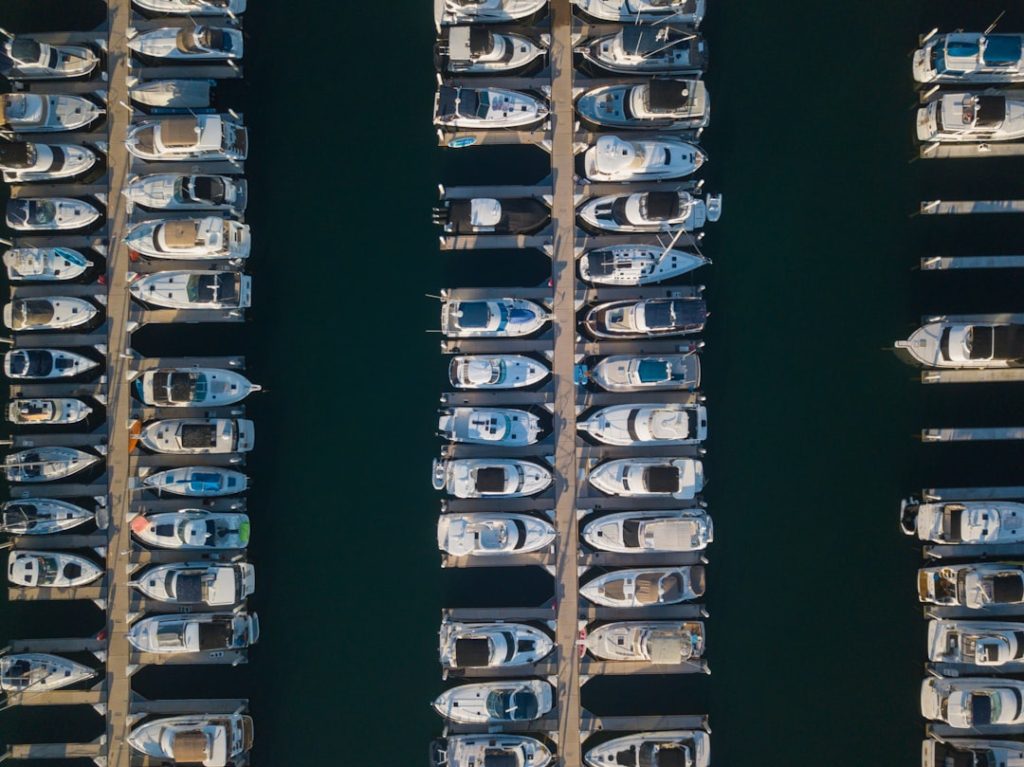The market for boats is as diverse as the waterways they navigate, offering a wide array of options tailored to various activities and preferences. Among the most common types are motorboats, sailboats, and personal watercraft (PWCs). Motorboats, which include everything from small runabouts to large yachts, are favored for their speed and ease of use.
They are ideal for activities such as fishing, water skiing, and leisurely cruising. Sailboats, on the other hand, appeal to those who appreciate the art of sailing and the tranquility of harnessing the wind. These vessels can range from small dinghies to expansive ocean-going yachts, each designed to provide a unique experience on the water.
In addition to motorboats and sailboats, there are specialized vessels like pontoon boats, which are perfect for social gatherings and family outings due to their spacious decks and stability. Fishing boats, designed specifically for anglers, often come equipped with features like live wells and rod holders. For those seeking adventure, inflatable boats and kayaks offer portability and versatility, allowing users to explore rivers, lakes, and coastal areas with ease.
Each type of boat serves a distinct purpose, catering to different lifestyles and recreational needs, making it essential for potential buyers to identify their primary use before making a purchase.
Key Takeaways
- Various types of boats are available, each suited for different activities and preferences.
- New boats feature advanced technologies and innovative designs enhancing performance and comfort.
- Leading brands and manufacturers offer a range of quality boats with strong reputations.
- Important factors to consider when buying include boat condition, intended use, and budget.
- Financing options and accessories can significantly impact the overall cost and boating experience.
New Features and Innovations in Boats
The boating industry has seen remarkable advancements in technology and design over recent years, leading to a plethora of new features that enhance safety, performance, and comfort. One significant innovation is the integration of smart technology into boats. Many modern vessels now come equipped with advanced navigation systems that utilize GPS and sonar technology to provide real-time data on water depth, underwater obstacles, and even weather conditions.
These systems not only improve safety but also enhance the overall boating experience by allowing users to plan their routes more effectively. Another notable trend is the development of eco-friendly boats that utilize alternative energy sources. Electric propulsion systems are becoming increasingly popular, offering a quieter and more sustainable option for boaters.
These systems reduce reliance on fossil fuels and minimize environmental impact, appealing to a growing demographic of environmentally conscious consumers. Additionally, advancements in hull design and materials have led to lighter, more fuel-efficient boats that can achieve higher speeds while consuming less energy. Innovations such as hydrofoils and catamaran designs further enhance performance by reducing drag and improving stability on the water.
Top Brands and Manufacturers

When it comes to purchasing a boat, brand reputation can play a crucial role in ensuring quality and reliability. Some of the most respected names in the industry include Sea Ray, Boston Whaler, and Yamaha. Sea Ray is renowned for its luxurious motor yachts and sport boats that combine style with performance.
Their attention to detail and commitment to craftsmanship have made them a favorite among recreational boaters. Boston Whaler is synonymous with durability and safety; their unsinkable hull design has earned them a loyal following among fishermen and families alike. Yamaha is another prominent player in the boating market, particularly known for its high-performance PWCs and outboard motors.
Their innovative designs often incorporate cutting-edge technology that enhances user experience while maintaining reliability. Other notable brands include Chaparral, known for their versatile sport boats, and Grady-White, which specializes in high-quality fishing boats. Each manufacturer brings its unique strengths to the table, making it essential for buyers to research brands thoroughly to find one that aligns with their specific needs and preferences.
Considerations for Buying a Boat
| Consideration | Description | Typical Metrics | Importance Level |
|---|---|---|---|
| Type of Boat | Choose based on intended use such as fishing, cruising, or watersports | Fishing boat, Sailboat, Pontoon, Cabin cruiser | High |
| Size and Capacity | Determines how many people and gear can be accommodated | Length (ft): 15-50, Passenger capacity: 4-12 | High |
| Engine Type and Power | Impacts speed, fuel efficiency, and maintenance | Outboard/Inboard, Horsepower: 50-300 HP | Medium |
| Budget | Initial cost plus ongoing maintenance and storage fees | Purchase price, Annual maintenance cost | High |
| Storage and Mooring | Availability and cost of storing the boat when not in use | Marina fees, Dry storage options | Medium |
| Safety Features | Essential for compliance and protection on water | Life jackets, Fire extinguisher, Navigation lights | High |
| Fuel Efficiency | Important for operating cost and environmental impact | Gallons per hour (GPH), Range per tank | Medium |
| Maintenance Requirements | Frequency and complexity of upkeep needed | Hours per month, Cost per year | Medium |
| Resale Value | Potential future value retention | Depreciation rate, Market demand | Low to Medium |
| Legal and Licensing | Compliance with local boating laws and registration | Registration fees, Licensing requirements | High |
Purchasing a boat is a significant investment that requires careful consideration of various factors. One of the primary considerations is the intended use of the boat. Buyers should ask themselves whether they plan to use it for fishing, cruising, watersports, or simply relaxing on the water.
This decision will influence not only the type of boat but also its size, features, and necessary equipment. For instance, a family looking for leisurely outings may prioritize comfort and space, while an avid angler might focus on functionality and storage for fishing gear. Another critical aspect is budgetary constraints.
Beyond the initial purchase price, prospective boat owners must account for ongoing costs such as maintenance, insurance, docking fees, fuel expenses, and potential upgrades or repairs. It’s advisable to create a comprehensive budget that encompasses all these factors to avoid financial strain down the line. Additionally, buyers should consider whether they want a new or used boat; each option has its advantages and disadvantages.
New boats come with warranties and the latest features but can be significantly more expensive than used models that may still offer great value.
Financing Options for Boat Purchases
Financing a boat purchase can be approached in several ways, depending on individual financial situations and preferences. Traditional bank loans are one of the most common methods for financing a boat. Many banks offer specialized marine loans with competitive interest rates tailored specifically for boat buyers.
These loans typically require a down payment ranging from 10% to 20% of the purchase price and may have terms extending from five to twenty years. Another option is financing through the dealership or manufacturer. Many boat manufacturers have partnerships with financial institutions that provide attractive financing packages directly through their sales channels.
This can simplify the process as buyers can handle both purchasing and financing in one location. Additionally, some credit unions offer loans specifically designed for recreational vehicles like boats, often with lower interest rates than traditional banks. It’s essential for buyers to shop around for financing options to find the best rates and terms that suit their financial situation.
Boating Accessories and Add-ons

Once a boat is purchased, many owners choose to enhance their experience with various accessories and add-ons that improve functionality and comfort on the water. Safety equipment is paramount; items such as life jackets, fire extinguishers, flares, and first aid kits are essential for compliance with maritime regulations and ensuring passenger safety. Additionally, navigation tools like GPS devices or chart plotters can significantly enhance the boating experience by providing accurate information about routes and conditions.
Comfort-related accessories also play a vital role in enhancing time spent on the water. Upgrades such as bimini tops provide shade from the sun while allowing for ventilation on hot days. Cushioned seating or bean bags can make lounging more enjoyable during long trips or while anchored at a favorite spot.
For fishing enthusiasts, rod holders, tackle boxes, and fish finders are invaluable tools that can increase success on fishing outings. Furthermore, entertainment systems featuring Bluetooth connectivity allow boaters to enjoy music or podcasts while cruising or relaxing at anchor.
Tips for Inspecting and Evaluating Used Boats
When considering a used boat purchase, thorough inspection is crucial to ensure that buyers are making a sound investment. One of the first steps is to examine the hull for any signs of damage or wear. Look for cracks, blisters, or signs of previous repairs that could indicate underlying issues.
A well-maintained hull should be free from significant blemishes; however, minor cosmetic imperfections may be acceptable depending on the overall condition of the vessel. Additionally, it’s essential to inspect the engine thoroughly. Buyers should check for any leaks or corrosion around engine components and ensure that all systems are functioning correctly.
Requesting maintenance records can provide insight into how well the boat has been cared for over time. A sea trial is also highly recommended; this allows potential buyers to experience how the boat handles on the water while assessing its performance firsthand. During this trial, pay attention to how smoothly it accelerates, how responsive it is during turns, and whether any unusual noises arise during operation.
Where to Find the Best Deals on Boats for Sale
Finding the best deals on boats requires diligent research across various platforms and marketplaces. Online classifieds such as Craigslist or Facebook Marketplace often feature listings from private sellers looking to sell their boats quickly. These platforms can yield excellent bargains; however, buyers should exercise caution by verifying seller credibility and thoroughly inspecting any potential purchases.
Boat shows are another fantastic avenue for discovering deals on both new and used boats. These events often feature multiple manufacturers showcasing their latest models alongside dealers offering special pricing or financing options exclusive to attendees. Additionally, many dealers have seasonal sales events where they offer discounts on inventory to make room for new models.
Networking within local boating communities can also lead to opportunities; fellow boaters may know someone looking to sell or may have insights into upcoming sales or auctions where boats are available at competitive prices. In conclusion, navigating the world of boating requires an understanding of various types of vessels available for sale along with considerations regarding features, brands, financing options, accessories, inspections, and where to find deals. Each aspect plays a vital role in ensuring that prospective boat owners make informed decisions tailored to their unique needs and preferences.


